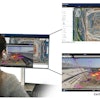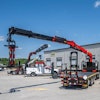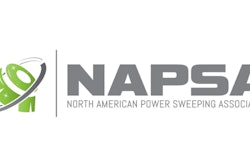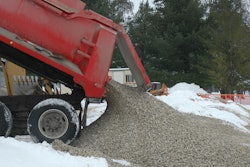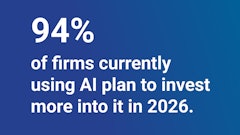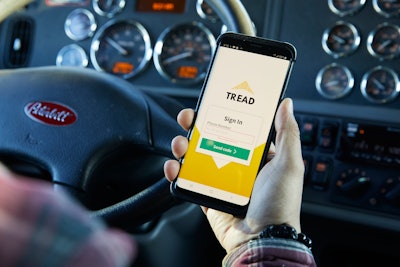
Noah Dolgoy, founder and CEO of Tread was first exposed to the challenges of managing heavy equipment and subcontractors when he started a residential construction business while attending college. Dolgoy also worked in infrastructure finance and corporate law and subsequently advised an excavation company.
Waiting on material or trucks to show up was the biggest challenge Dolgoy experienced. The more time spent in the industry he realized it was a broad problem and many contractors experienced the same challenges, prompting him to turn to technology in 2016 and start Tread.
Tread is a mobile platform that makes the business of moving raw materials in the construction industry, more profitable, more efficient, more productive and more connected. The app allows companies, contractors and asphalt plants to work together and become one fleet. It also provides visibility into a workflow that has historically been paper-based.
“The industry is beginning to digitize quicker than it used to and still has a long way to go,” Dolgoy said. “We provide a customized approach to the app depending on the comfort level of technology usage to match what the customers’ needs are.”
The implementation of Tread depends on the willingness to adapt to the different tools. However, Dolgoy said, “within 30-days of signing up, while following the onboarding plan, a company can have at least 90% of their business digitized.”
Safer and More Efficient
With paper tickets, truck drivers will typically drive a load across a scale, get out of the truck, enter the scalehouse to pick up copies of a paper ticket, return to the truck and drive off.
These paper-based processes can get lost in the shuffle of a job. Tread offers a paperless e-ticketing solution that can digitally capture those tickets and store them for all the drivers and contractors to easily access.
Tread also has the ability to notify the crew about upcoming truck arrivals, eliminating the guesswork on when the next load will be at the jobsite. Also, if that truck gets delayed a notification will come in so everyone can operate at peak performance and streamline processes.
Understanding the Data
The industry is competitive for bidding jobs, the pressure to improve efficiency and cut costs while working under tight deadlines is looming. Implementing a paperless technology system into your workflow will improve communication across all employees, the papers won’t get lost in transit and allows easier access to the information, from anywhere at any time.
There are four primary components to the data generated by the Tread app. The first, Cycle Time, allows contractors to understand the nuances of each load of each trip, by each truck and driver. “This gives the contractors the ability to understand, how materials are being moved to optimize the efficiency of the dispatch program,” Dolgoy explained.
The second component is the Profitability Report, which allows the company to understand targeting and goal setting and how it reflects on an entire jobsite.
The third primary component is Compliance Data where the stakeholder can understand how their employees are interacting with the Tread app. “Is the app on their phone on? Are they actually tracking and logging the jobs properly? Are the dispatchers working within the app the way they are supposed to be?” said Dolgoy. “The reason to look at compliance data is to make sure everyone is using the app correctly and make sure all users are in sync with one another.”
The fourth component, Site Activity, allows users to understand the entire site as a whole. “Users can look at an individual jobsite relative to another and understand how different projects are generating margins for your company,” said Dolgoy. “Site activity also allows the stakeholder to understand what a good project for their company is.”
“While there is a lot of different data that Tread can surface, it is really about what the company wants and what they need to see. Tread is also able to work with companies on generating other reports such as movement, commercial and communication data among other things.”
Productivity During a Pandemic
The Coronavirus pandemic has triggered a generational change in the adoption of technology. Companies have been forced to change their way of operating due to COVID-19, taking into consideration remote workers and physical distancing among many other obstacles. “We have seen a real mindset shift across the industry in regard to the rate of technology adoption,” Dolgoy said. “Companies suddenly had to start looking into tools like Tread to shift their paper-based process to digital.”
On the up-side, digital platforms and apps will last long beyond the pandemic, resulting in improved efficiency, better communication, and transparent data for each job.


